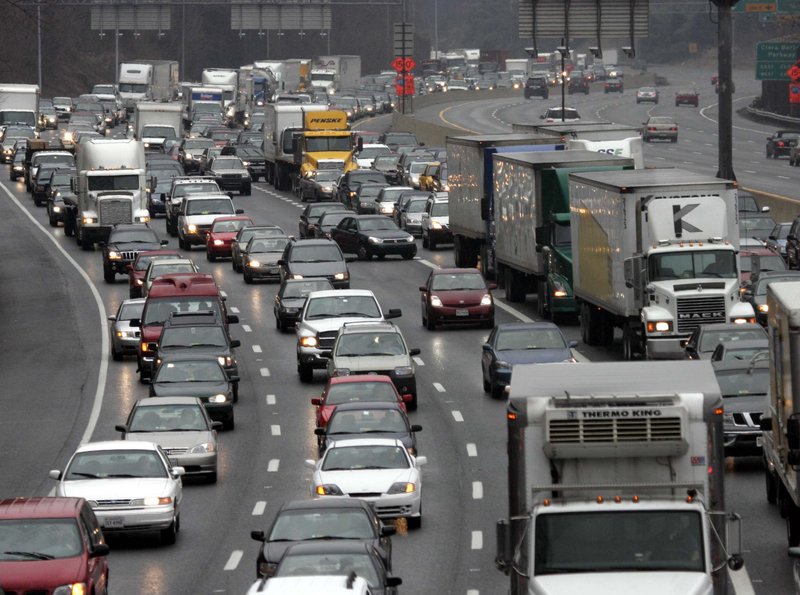California has become the seventh state to ban auto insurers from using sex as a factor in calculating the rates that customers pay.
The decision by state Insurance Commissioner Dave Jones, made in the name of equality, is likely to result in cheaper insurance premiums for young male drivers -- who are statistically riskier to insure -- at the expense of young female drivers, who are statistically less risky but now will likely pay more.
Nationwide, a male teen will cost about $7,400 to insure on average, compared with $6,900 for a female teen, said Penny Gusner, a consumer analyst with carinsurance.com, an online marketplace for car insurance.
"It's probably going to meet in the middle, which will probably hurt the female drivers and give the young male drivers a break," Gusner said.
California's decision to ban gender criteria, effective Jan. 1, comes as lawmakers and regulators increasingly pressure insurers to focus more on driving behavior than on criteria that seem less obviously related to assessing risks. The move also highlights the complex and ever-shifting ways in which insurers price auto insurance in general.
A new report on auto insurance trends by the Zebra.com, a search engine that allows consumers to compare car insurance policies, found that the industry is rejiggering its analysis of risk by adopting technologies that monitor driver behavior on the road. These tools, known as telematics, allow insurers to tailor insurance policies to customers based on how many miles they drive, how fast they drive and other indicators of a driver's behavior.
Insurers are also dinging drivers harder for dangerous behavior such as distracted driving: A ticket for distracted driving bumped insurance premiums up by an average of $289, or nearly 20 percent, in 2018, compared with an increase of nearly 2 percent three years earlier.
That's still less than the increase for a speeding ticket for going 10 mph over the limit ($880) and way less than being arrested for driving under the influence, which can raise premiums by more than $1,000 on average. But the analysis suggests that insurers are responding to increasing evidence that smartphones and elaborate entertainment systems, among other distractions, could be having an effect on traffic crashes and fatalities.
Rates have jumped across the country, analysts say.
"It's the highest it's ever been nationally," said Alyssa Connolly, Zebra's director of market research. "Rates are up this year for 83 percent of Americans. And it's erratic."
Zebra's report, based on more than 61 million rates, says premiums in some states rose almost 80 percent, while others saw declines of about 20 percent. Michigan again ranked as the state with the highest average ($2,693) while Maine reported the lowest ($896). The average premium in the United States has hit $1,470, an increase of 23 percent from the average in 2011. The data were drawn from 2011 to the third quarter of 2018.
The report also looked at the effect that the various individual rating factors can have on insurance premiums. In addition to California, six other states -- Hawaii, Massachusetts, Montana, Pennsylvania, North Carolina and parts of Michigan's market -- now ban sex as a rating factor, according to the Consumer Federation of America.
"Gender, at a national level, doesn't really move the needle very much [for most ages]," Connolly said. "It does at younger ages, but for most people it's 1 to 3 percent. For teens, it's a little more. In some states it can get to 4 or 6 percent."
Those differences all but vanish among older drivers, causing women to pay more, the Consumer Federation of America says. As the European Union found out years ago, it's possible that sex was only a proxy for more justifiable risk factors that do have an effect on rates and a correlation to gender. This is viewed as one explanation for why the premiums that men paid for their car insurance, compared with women, increased after the EU banned the use of gender in setting insurance rates in 2012.
In addition, other states have moved to ban the use of educational status, marital status or credit scores. Insurance companies say credit scores help them gauge the likelihood of whether a person will file an insurance claim, but consumer advocates say they can unfairly push up people's rates.
"I think one of the things that gets people really fired up is credit ratings," Connolly said.
Connolly said auto insurers may be tempted to monitor people's digital footprints when they set rates, as those have been shown to correlate with other factors that have been banned in places, such as credit scores. And it's not just what people post: It's when they're online, what type of email they use, and even whether they have typos in their posts.
But for now, many companies are content to focus on telematics, which receive data from participants' smartphones or devices plugged into cars. These allow insurers to monitor when, where and how people are driving, including whether they're speeding, braking hard or accelerating too quickly.
Business on 02/12/2019
